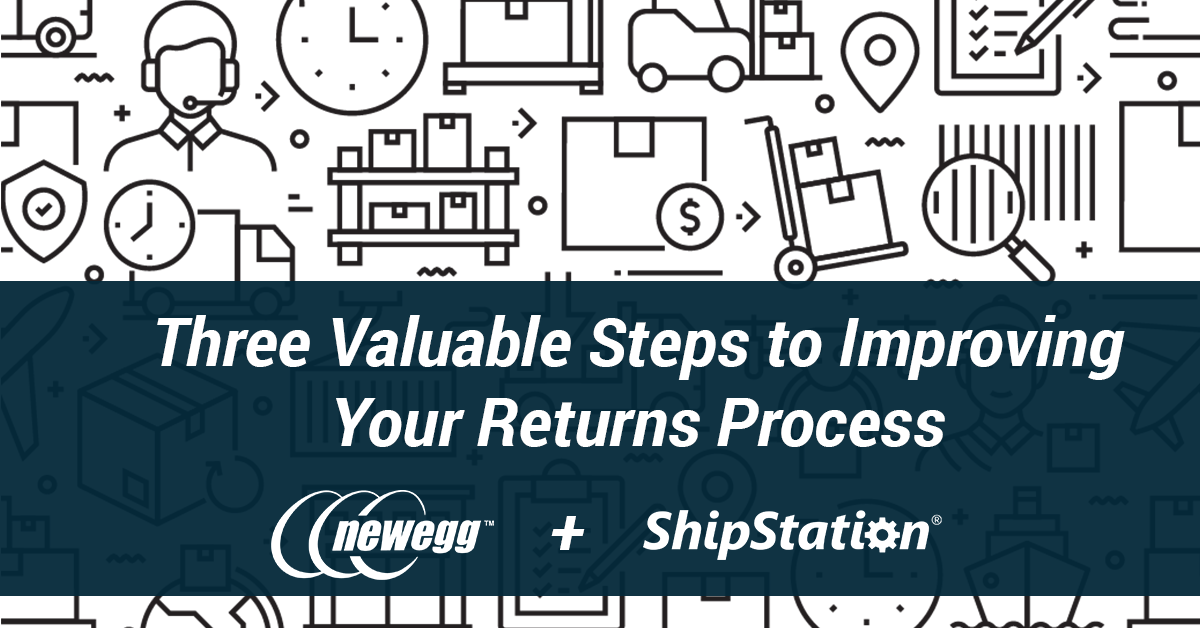Returns are a costly and time-consuming part of a successful e-commerce business. And while no one — buyer or seller — wants to deal with them, an effective policy and returns process strategy can strengthen the bond between you and your customers, thus creating repeat business and loyalists. In this blog, Newegg partners with ShipStation to uncover valuable insights and surprises into just what consumers think about returns.
For a deeper dive, the ShipStation survey consisting of over 1,200 qualified consumers of diverse ages and backgrounds can be read here.
Authorized retailers on marketplaces like Newegg and Amazon have influenced consumer expectations around the ease of returns. But the expectations are not solely about having returns be free. In fact, the major benefit customers find when buying from larger, more established retailers is the simplicity and ease of their returns policies. When customers buy from smaller marketplaces or third-party sellers, the concern is largely one of doubt. “What if this doesn’t work? Can I get a refund?”
The success of return policies and buyer satisfaction guarantees has even grown to where consumers will buy store-brand third party items like Newegg’s Rosewill and Amazon Basics. There’s a layer of irony to the success of these items compared to some consumers’ hesitance to buying authorized products from third-party vendors. Luckily, there are ways to carve a path as a smaller merchant and compete with the big dogs:
If you establish rigid processes and set proper expectations that cater to customer demands, you can compete with retailers much larger than you.
Returns Influence Purchase
A common mistake sellers make is thinking that returns are a post-purchase concern. However, customers are becoming more attuned to a company’s order lifecycle before they even put items in their cart. 72% of consumers factor a return policy into their final purchasing decision. Whether it’s concerns about damage during transit or if they’re ordering the right part. Consumers don’t want to be stuck with something they don’t need.
Beyond if an item can be returned, return cost is another big driver. 53% of consumers factor return costs into their purchasing decision. ShipStation also found that consumers are only willing to pay a maximum of $5 to process a return. Charging higher than this can cause cart abandonment.
There’s also a lot of opportunity for sales if you make the returns process simple — 63% factor how easy it is to return a product into their purchasing decision. Creating a simple returns process can help win more customers. Furthermore, 95% won’t buy from a company again if they experience a negative returns process.
Which Items People Return and Why
Clothing and shoes are the most commonly returned items, but right behind them are electronics. The major reasons that consumers cited returning items were:
- 74% of returns are over issues with the item’s fit.
- 55% return items because they ended up not liking the item.
- 41% ended up not having a need for the item.
While these issues largely reflect apparel, it also rings true for electronics and computer parts. Offering store credit with discount codes for items that don’t end up working is a great way to incentivize additional sales.
Most Commonly Returned Items
Least Commonly Returned Items
46% of positive returns experiences result in consumers exchanging for more expensive items. This is especially true during the holiday season.
How to Offer Returns
Include a Prepaid Return Label
When it comes to offering simple returns, customers largely prefer to have a prepaid label included in the packaging with their order and having the cost deducted from their refund if they use it. The only drawback to this option is that most carriers that offer pay-on-use returns are also more expensive options such as FedEx or UPS.
For Newegg Marketplace sellers, online RMA requests and return shipping labels are made available to every customer who purchases on Newegg. The Newegg Marketplace Returns Standards ensure that Newegg platforms will remain the best shopping destination for our customers.
Keep the Packaging
When customers return items like computer parts, packaging tends to be specific. Returning a shirt is easy. You can put clothes in any poly mailer that you can stuff it in. But anyone that has ever shipped computer parts knows how tedious the packaging needs to be. Using antistatic bubble wrap and/or sturdy cardboard packaging is needed not to damage the items in transit. Using antistatic bags that are resealable is a good idea because they are reusable in the event of a return. Tell your customers to keep the packaging in the event that an item isn’t exactly what they need. Making this process simple is one way that customers will buy from you again.
As a Marketplace Seller
This was just a small sample of the incredible insights from our partner, ShipStation. If you are interested in learning more about the best steps for your business’ returns process, please look into our Newegg Fulfillment Soultions. For other Newegg + ShipStation colaborations, be sure to check out our Q4 shipping strategies and blueprint to improved customer experience articles.



